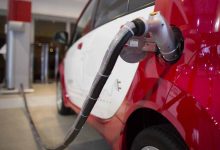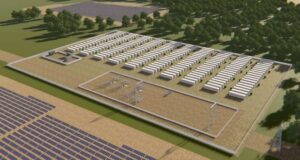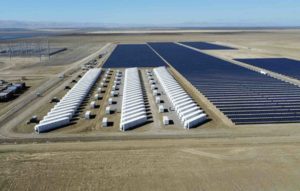Two articles caught my eye recently, and made me double down on an idea that has been brewing for some time – an Australian sovereign wealth fund focused on battery metals.
Using International Energy Agency forecasts for electric vehicles, and market pricing for battery metals, in this article I will show that by 2030, capturing just 25% of the battery metals market, could lead to twice as much mining revenue ($135b/pa) to Australia as we get from coal exports ($65b/pa).
It’s time we stop coveting the Norway sovereign wealth experience, the world’s largest sovereign wealth endowment at over $1trillion dollars, and take steps to create our own.
Article 2: Norway set to gain more from drilling in Great Australian Bight than Australia
See the connection?
It is the oldest business model trick in the world, to privatise the profit and socialise the risk.
Just to add salted herring into the wound, the lion’s share of profit from Australian oil and gas assets being exploited in the Bight, will flow to Norway, ranked No.1 for human development by the UN. Ok ok, Australia is ranked no.3 on that list too, so it isn’t all bad I suppose…
Perhaps ironically, it comes at a time when Big Oil appears set for a Big Decline – even BNP Paribas thinks so, looking with a financial lense only. So perhaps more fool Norway?
But really the reason the articles got my attention is that we are sitting on the very things that will replace oil and gas this century.
Battery Metals.
Nickel, Cobalt, Manganese, Lithium, rare earths and Vanadium for grid scale storage too.
The detail is covered in fantastic groundwork laid, under the brand name Lithium Valley.
Although it must be said that given BHP sees Nickel as a once in a generation investment opportunity arising from the EV transition, perhaps it should be called Nickel Nirvana.
If BHP sees this as a once in a generation investment opportunity, it probably means as Australian’s, we are sitting on a once in a generation opportunity, to create a sovereign wealth fund focused on battery metals investment.
A sovereign wealth fund could focus on bringing online battery metals supply in Australia initially, with the potential to leverage our mining and chemicals expertise into projects globally over time.
Instead of piecemeal R&D funds drip fed to projects, a sovereign wealth fund could make serious long term investment in chemical value adding, providing the stability needed to build our capabilities and bringing leverage and scale to battery cell manufacturing partnerships with global giants such as CATL, Samsung and LG Chem.
We even have expertise in battery metals recycling, and so could control a closed battery metal materials, with product stewardship embedded in the sovereign wealth fund investment model.
The maths on Nickel as a sovereign wealth opportunity is pretty straightforward so let’s start there.
Its an open secret that battery chemistry in cars is going to “NMC”, standing for Nickel: Manganese: Cobalt. Most importantly, it’s going to that chemistry mix in roughly 8:1:1 over time (it isn’t quite at those ratios yet across all battery suppliers, but some of the big ones like CATL are already doing 811).
High Nickel ratios are partly what has given Tesla’s batteries an edge to date as they enhance energy density, and probably one of the reasons CATL looks set to supply Tesla in China.
Mass market EV’s are almost guaranteed to need at least 50kWh for the foreseeable future, to give buyers enough range to make the purchase worth it, which means roughly 60kg of Nickel per new EV. Nickel has been selling for around $7/lb US, or $22/kg Australian.
That’s $1320 worth of Nickel per EV, before we consider the opportunity for Australia to value-add (i.e. to produce refined battery chemicals, or battery cells themselves, rather than just supplying processed ore).
How many EV’s could there by by say, 2025?
There are currently about 77m cars made each year. When you scan across the plans of big auto (VW, Toyota, Hyundai…Tesla), its plausible we could get to at least 30%, if not 50% of new cars being EV by that time.
Let’s call it 25m EVs by 2030, a figure even conservative analysts would currently accept. The international energy agency is forecasting it could be as high as 125m EVs by 2030.
25m x $1320 = $33b/pa. That’s $33b/pa of Nickel revenue…Now add cobalt revenue at 8kg per car, fetching $50/kg (AUS). That’s another $10b/pa. Lithium at say 10kg/car, fetching roughly $11/kg (AUS), add another 2.5b/pa.
Just on three key battery ingredients, by 2025, EVs (just passenger vehicles) might chew through over $45b/pa of raw metal inputs at current metal prices.
Bear in mind, those metals are currently in a price funk – that $45b/pa could easily become $90b/pa+ on bull market metal pricing alone.
Play it out to 2030 using the IEA forecast of 125m EV’s, include bull market pricing (which would be likely given the enormous demand pull for these metals) and you get a market size $540b/pa.
To put that in perspective, Australia’s annual coal export revenue is ~ $65b, a relatively small number particularly given the weight of evidence behind coal’s structural decline.
Capturing just 25% of the EV metals market by 2030, would make it twice as large as coal is today.
The thing is, realising that value 20 years from now, requires action, real action, today.
How long do we have until the opportunity passes us by? Until a sovereign wealth fund for battery metals, as an idea, is too late?
Looking across the lithium industry, the writing is on the great wall. Assets across Western Australia have been largely stitched up by foreign investment to date, with project deals initially done on the back of high lithium prices and a buoyant outlook for the industry.
But a re-work of Chinese battery subsidies combined with slower than expected EV ramp by the majors, has seen lithium prices come well off, and projects already being mothballed.
The cynical are saying this is just part of the long game being played, taking advantage of commodity pricing and sentiment to extract value from those that are commodity exposed (Australia). That is, a lot of lithium projects used relatively high cost debt and investment coming from international syndicates, including car companies and battery makers themselves.
Many of these are now well positioned to swoop on assets and squeeze their value for the long term.
The next wave of investment is expected to come for Nickel, with sovereign risk in Indonesia and the Phillipines giving Australia a strong competitive edge, and possibly “ethical cobalt” given the very real supply chain risks around cobalt supply from Africa, specifically child labour and conflict labour in the DRC.
Will Australia be ready to ride this wave?
Will all Australian’s share in the benefit of this once in a lifetime opportunity, to align financial and environmental goals for the long run?
Perhaps most importantly, can we dig it?










